Written by Angela Sheridan, WellMob
The last few years in the health care sector have been some of the most challenging times that continue to be experienced by our health workforce. As a result of these challenges, the need for better personal and work life balance, setting boundaries and effective self-care to minimise or even prevent burnout have been highlighted.
But what is burnout?
Many people may have experienced burnout but what is it and how can it be managed or even prevented?
Burnout is defined as complete mental, physical and emotional exhaustion that is far more than only feeling exhausted. It is not exclusive to paid workers and can also relate to home life, caring responsibilities, family and community expectations and cultural obligations. However, because it’s not simply exhaustion, it’s not sustainable to just do less or to cut back on responsibilities. Burnout isn’t often caused by just one of these reasons but more so a chronic cumulation of such prolonged stressors.
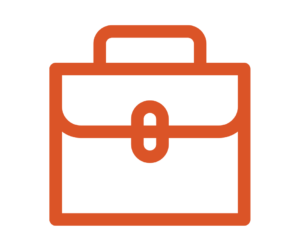
Work-related causes of burnout
- Working in a high pressure or disorganised environment
- Workloads – being overworked, time poor, doing unpaid work
- Staff shortages and extra shifts due to these shortages
- Not being recognised or rewarded for the work that you do
- Having little or no control over your work, being micromanaged or undermined
- Feeling culturally unsafe/unpaid, with the expectation to educate colleagues and explain social or political aspects of your culture
- Workplace bullying and harassment.
- Lack of job security due to funding cycles, contracts etc
- Finding the work mundane, unexciting, or not challenging
- Having unrealistic expectations yourself or having them placed upon you
- Chronic and prolonged stress caused by other work-related or external factors
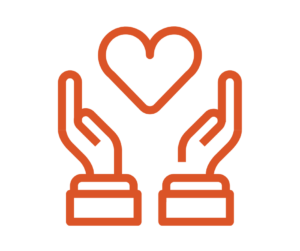
Lifestyle related causes of Burnout
- Carer responsibilities – family, parenting
- Community and cultural obligations
- Not getting adequate sleep
- Not having time to relax and recharge
- Not having a balanced social life – too much time socialising or too much time isolating and alone
- Not feeling as though your own personal needs are being met by those closest to you i.e. partner, family etc
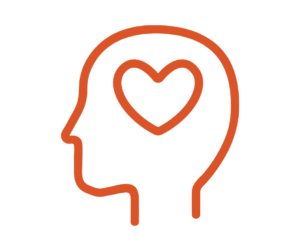
Some personality traits and mindsets can also contribute to feeling burnt out.
The internal pressures put upon ones-self can contribute to burnout:
- Perfectionist tenancies
- Pessimistic view of the world
- Needing to be in control
- Not being able to set and maintain clear boundaries/being a people pleaser despite own needs
Burnout can feel like
- feeling exhausted and unable to perform basic tasks
- losing motivation in many aspects of your life, including your work, hobbies or relationships
- feeling unable to focus or concentrate on tasks
- feeling empty or lacking in emotion
- losing your passion and drive
- being easily irritated by small problems
- experiencing conflict in your relationships with co-workers, friends and family
- emotionally withdrawing from friends and family
- feeling on the verge of breaking point
Physical symptoms
- Headaches
- Stomach aches/intestinal issues
- Fatigue
- Frequent illness
- Changes in appetite/sleep
Emotional symptoms
- Helplessness
- Cynicism
- Sense of failure or self-doubt
- Decreased satisfaction
- Feeling detached or alone in the world
- Loss of motivation
Behavioural signs
- Reduced performance in everyday tasks
- Withdrawal or isolation
- Procrastination
- Outbursts
- Using substances to cope
What can I do about Burnout?
Check in with your workplace
Chat to supervisor and come up with a plan of how they can support you (reduce load, free counselling through EAP service, external supervision, reduce extra work responsibilities, be aware of extra unpaid work taking a mental and emotional toll).
Prioritise physical health
Especially the basic things like proper sleep and a healthy diet full of plenty of fresh fruit, veggies and protein. If cooking is too difficult, look into meal delivery or meal kit services or even ask a family or friend to help in providing meals.
Make time to exercise
by either maintaining an exercise routine or introducing walks into your wellbeing routine. Find a team sport, a gym class or even a home dance work out. The endorphins released in the body by exercise will help to lift your mood.
Spend time in nature
Outdoors, sunshine, beach, or bush walks or even just a walk through the local neighbourhood or park. Be in a state of mindfulness while doing this and connect into the natural world around you.
Seek medical professional help
With a GP or counsellor alongside these things and identify practitioner pathways if you still feel you need more support in your burn out recovery.
Use online mental health resources
and digital tools like the one found on eMHPrac and WellMob websites for your own wellbeing.
Start small and as your window of tolerance and personal capacity grows, increase back to pre burnout levels.
What were the warning signs?
- Were there any hobbies or activities that you let go of when things got busy?
- Did you experience any physical signs of stress, such as trouble sleeping or concentrating, or forgetting things?
- Was there increased use of alcohol or other drugs?
- When you first started feeling drained, what areas of your life suffered first?
- Maybe you weren’t motivated to perform with your work or study, or did you have trouble keeping up with texting friends?
- Were you more pessimistic or more easily irritated by small things?
- Did you have increased conflict with friends, family or co-workers?
How to prevent burn out in the future
- Take time out regularly – have one night a week where you switch off from work and other responsibilities and expectations at 6pm. Use this time to switch off, relax and detox from the day/week and unwind
- Identify what are your early warning signs – once you can identify these signs then you can get ahead of it next time they start to present.
- Re-evaluate your goals and priorities to keep a work-life balanced
- Learn to set boundaries and say ‘no’ to things that may over-extend your balance, time commitment, mental and emotional capacity
- Maintain your wellbeing practice and the things that make you feel good
- Have regular work supervision either internal or external and include cultural supervision. If your workplace doesn’t have this, utilise the EAP or look into establishing staff network supervision groups, or identify your own external support and pay for it (you can claim this on tax, depending upon your role and qualifications).
Useful Online resources found on the WellMob website
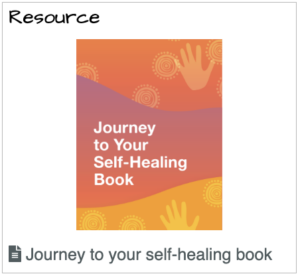
Journey to your self-healing book – All resources – WellMob
Prioritising health, wellbeing and self-care are the most common goals set and this Journey to Self Healing Booklet found on the WellMob website is a great tool and guide for people to create monthly goals and plans for their healing journey. It includes healthy recipes, wellbeing tips, affirmations and colouring pages. It also allows you to list wellbeing contacts, appointment notes and medications.
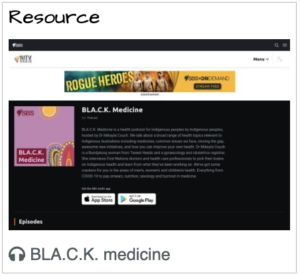
BLA.C.K. medicine – BLA.C.K. medicine – All resources – WellMob
Dr Mikayla Couch, proud Bundjalung women and Bla.c.k Medicine podcast host, yarns with Blak Wattle Coaching founder and Managing Director Caroline Kell, proud Mbarbrum women about ‘Black burnout, what causes it and how it differs from burn out felt by other communities
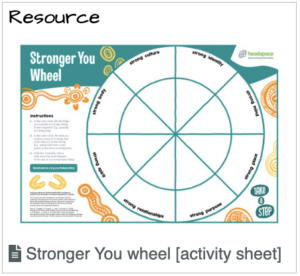
Take a Step resources – Take a Step resources – All resources – WellMob
Use the prompts on the wheel to self complete wellbeing strengths, things that you enjoy, keep you feeling well and strong and identify areas that get in the way of that.
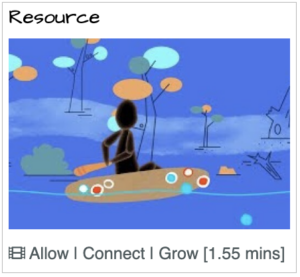
Allow | Connect | Grow – Allow | Connect | Grow – All resources – WellMob
A video of wellbeing that tells the story of paddling a canoe, when worries and stress become too heavy but then as wellbeing improves and capacity grows it becomes easier to paddle
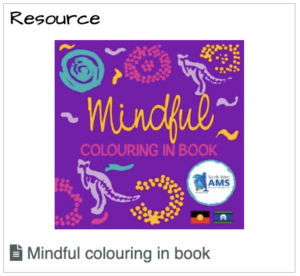
Mindful colouring in book – All resources – WellMob
The practice of mindfulness is a great way to calm a busy or anxious mind and manage stress.
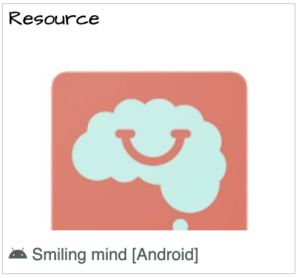
Smiling mind [app] – Smiling mind [app] – All resources – WellMob
A free app with guided meditations to teach people how to calm the mind. It includes simple meditations such as using breath and mindfulness to reduce anxiety and help people to sleep better.









